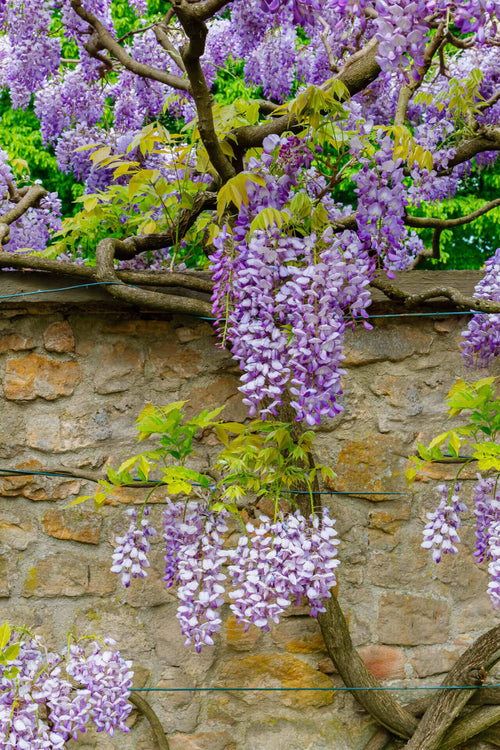What Is a Wisteria Tree?
Wisterias are a family of flowering vines with beautiful flowers and ornate leaves. Wisterias are part of the pea family, which makes sense as the flowers of natural wisteria resemble a pea pod in many ways. The wisteria flower is also known as the Japanese wisteria and Chinese wisteria, as well as the Asiatic wisteria or Chinese parasol tree. These trees can grow to be over 30 feet high.
How Do You Take Care of Wisteria Trees?
Wisteria trees are easy to grow and care for if you keep them watered and fertilized correctly. They do best when planted in full sun but will tolerate partial shade.
How Much Sunlight Does a Wisteria Tree Need?
Wisteria trees need about six hours of sunlight per day. If your home has a canopy of trees or foliage, you may need to move your wisteria to another location where it will get enough sunlight during the day.
Do Wisteria Trees Bloom Every Year?
Wisteria trees sometimes bloom if they need more water or fertilizer during the growing season. If this happens, you will need to prune some dead branches so they do not weigh down other branches and break them off.
What Does a Wisteria Tree Look Like?
The wisteria tree is a deciduous, flowering vine that can grow as tall as 20 to 40 feet. The leaves are dark green and large, and the flowers are small and fragrant. The flowers hang in clusters like grapes and bloom in late spring or early summer.
Where Do The Wisteria Trees Grow?
Wisteria trees grow best in U.S. Department of Agriculture plant hardiness zones five through nine. They will grow in all but the coldest areas of the country, although they will not be able to bloom there because they require warm temperatures to bloom properly.
What Are The Environments in Which Wisteria Trees Grow?
Wisteria trees do best in sunny areas where plenty of water is available when needed by the plant. You should not plant these types of trees near ponds or lakes because they will absorb too much moisture from the soil, which could harm them over time if left unchecked.
Are Wisteria Trees Toxic?
Wisteria trees are toxic to dogs, cats, and horses. If eaten in large amounts, they are also poisonous to humans. Wisteria flowers contain a toxin called wistaria that can cause vomiting, diarrhea, muscle weakness, and seizures.
How Do You Grow A Wisteria Tree?
The best time to plant this tree is in the winter months. During this period, frost damage to the roots or leaves is not dangerous. You should choose a location with plenty of sunlight and shade during hot summer days.
How Do You Care For Wisteria Trees?
You can trim your wisteria tree in early spring before new growth starts so it stays intact in your yard or house.
How Did Wisteria Trees Get Their Name?
The wisteria tree (Wisteria spp.) was named after Caspar Wistar (1761-1818) - a professor of anatomy at the University of Pennsylvania who had written about the plant’s medicinal uses.
Shop Our Wisteria Trees
Visit our online shop for a wide selection of plants and trees, or stop by our store in Tennessee!
We offer fast shipping nationwide, so you can start transforming your garden today!
If you have any questions about the Wisteria Tree or any other plant needs, don’t hesitate to contact us at customerservice@tennesseewholesalenursery.com. We’d love to hear from you!



















































